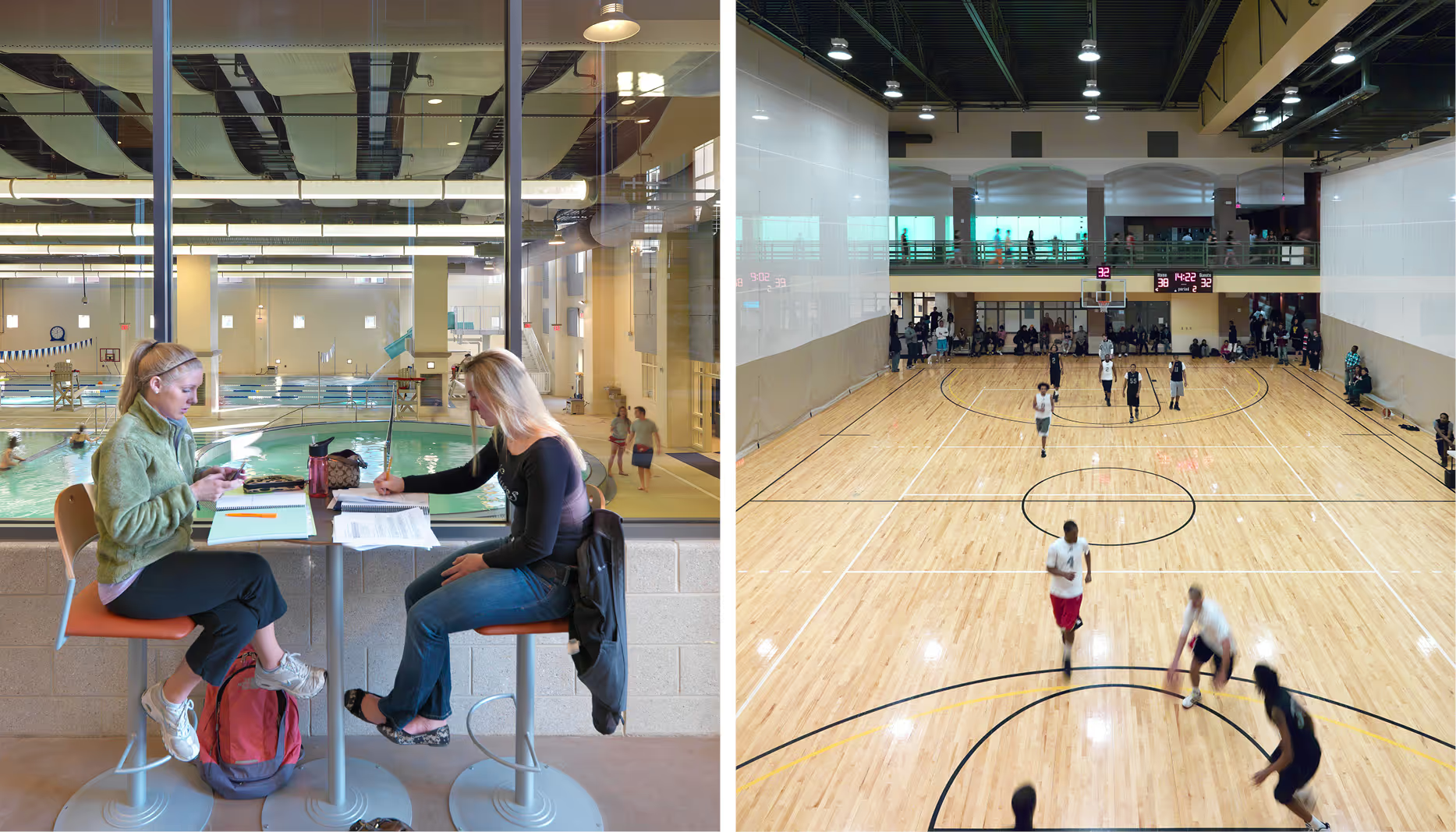
Virginia Commonwealth University, Cary Street Recreation Center
At Virginia Commonwealth University, the City Auditorium Building—a 19th century Richmond landmark—has taken on a new purpose. The renovation preserved the building's historic character while transforming it into an athletic center, featuring swimming pools, climbing walls, and courts that serve more than 19,000 students each semester on the Monroe Park Campus.
Engineering Meets Preservation
Updating the City Auditorium required precise architectural solutions to maintain its historic integrity. The breakthrough came through the roof system. By replacing the original wooden roof with steel that duplicates the exposed wood rafter patterns, the team satisfied International Building Code requirements while eliminating fire separation walls, enabling direct pathways between activity spaces.
A two-story, daylit atrium wraps the historic structure, touching it at only four points via second-story bridges. This design keeps most historic walls intact and visible. Glass sections clearly mark where nineteenth and twenty-first century elements meet, while the addition's barrel vault roof provides visual contrast to the original hip roof.
Neighborhood Integration
The project addressed Oregon Hill residents' concerns about scale and historic character through specific design elements. Along Cherry Street, the façade steps down to match two-story townhouses, incorporating three porches that echo the neighborhood's residential rhythm. The aquatics center and indoor courts on the south side decrease in height to align with historic Cumberland Street houses.
Brick and metal panels in the addition complement VCU's buildings across Cary Street while maintaining the historic auditorium's distinct presence. Each architectural detail, finish, and landscape element adheres to historic district guidelines.
Sustainability Performance
The facility earned LEED Gold certification by incorporating multiple environmental systems. The natatorium uses salt sanitization instead of chlorine. Dual-flush toilets, pint-flush urinals, and low-flow fixtures reduced water consumption by 37 percent. Construction teams diverted 89 percent of waste—5,200 tons—from landfills.
Carbon dioxide sensors regulate ventilation. Low-VOC materials and strict air quality protocols during construction created healthy indoor spaces. Rainwater collection cisterns supply irrigation, while locally-sourced materials minimized transportation impacts.
Campus Impact
The center's effectiveness shows in its usage numbers. Student participation rose to 19,756 users—69.04 percent of the student body, marking a 25.18 percent increase. Total visits grew to 595,623, up 53.83 percent. Spring 2010 alone recorded 329,306 entries, surpassing the previous year by 85 percent.
Inside, students access 185 pieces of fitness equipment, seven weight circuits, four gymnasium courts, an indoor track, two racquetball courts, and two pools. These facilities advance VCU's commitment to student health and campus community.
Campus Connection
The recreation center sits on a main north-south pedestrian route into the Monroe Park Campus. Large windows on the east and south sides reveal activities to the neighborhood, while the north and west facades engage campus walkways, making exercise visible and appealing to passersby.
This project demonstrates how precise engineering preserves architectural heritage while serving current campus needs. The Cary Street Recreation Center brings athletics facilities to VCU's urban campus while respecting Richmond's historic fabric.





"
"An outstanding integration of historic and state-of-the-art to complement other exterior architecture on campus. Amazing views and great daylighting."
Jury comments
Key Leaders
































